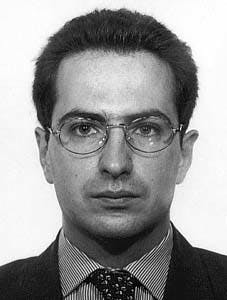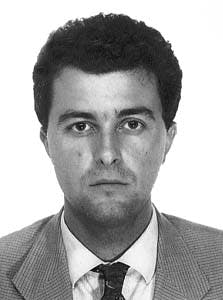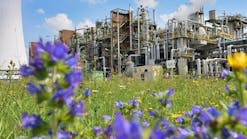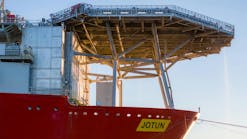Roberto Del BravoA joint venture company, api Energia S.p.A, is starting construction of a 280 mw integrated gasification combined cycle plant (IGCC) that will generate electricity for the Italian grid and steam in a refinery on Italy's Adriatic coast.
ABB Sae Sadelmi S.p.A.
RomeFrancesco Starace
ABB Sae Sadelmi S.p.A.
MilanIgino M. Chellini, Paolo V. Chiantore
Api anonima petrol italiana S.p.A.
Rome
Partners in the venture are api anonima petroli italiana S.p.A. and ABB Sae Sadelmi S.p.A. Api is the parent company of api raffineria di ancona S.p.A, which owns and operates the Falconara Marittima refinery, 10 km from the port of Ancona. The refinery will supply the heavy residue for the gasifiers.
This is one of the three IGCC plants planned for construction in Italy following the liberalization of the electricity production sector there and the introduction of specific government decrees that regulate the exchange and wheeling of electricity.
By the year 2000, approximately 1,300 mw of electricity produced by heavy residues with IGCC will be put on the Italian grid.
Project overview
Api Energia was set up in 1992 to first evaluate the feasibility of an IGCC power station.
The Falconara Marittima refinery is based on thermal conversion (Fig. 2 [24209 bytes]). The production cycle is typical for refineries of this capacity. The distillate yield is more than 70%; the rest is high sulfur and low sulfur fuel oil (HSFO and LSFO). The distillates are produced to meet stringent European quality specifications. All the units have been installed, completely modernized, or revamped over the past 10 years to maintain economical and technological competitiveness in the oil market while complying with safety and environmental criteria.
The Falconara Marittima refinery is strategically located in an area where no other refinery is present. This gives it a significant local market advantage over competing Italian oil companies. The nearest refinery is more than 300 km (180 miles) away at Venice. Additionally, the region is the poorest in Italy in terms of electric power production.
With the construction of the IGCC plant and the completion of the desulfurization units, the refinery will become a "white refinery" with no high or low sulfur fuel oil production (Figs. 2 [24209 bytes] and Fig. 3 [13790 bytes]).
Only a very-low sulfur fuel oil with 2,500 ppm sulfur will be produced while all the high sulfur heavy residues will be converted into clean syngas in the gasifiers of the IGCC plant. Api Energia will lease an area of approximately 47,000 sq m on the refinery's premises.
Pioneer
In the years 1993 to 1995, the api Energia project development took place based on studies of the appropriate project configuration and financing. During this period, api Energia was the pioneering large independent power producer (IPP) in a country where electricity has always been a monopoly. Project financing schemes of this kind and proportions had never been applied. The complex structure of the project was put in place by developing the contractual framework through which all the involved parties, including sponsors, contractors, suppliers, lenders, licensors, and consultants are now working to implement the IGCC plant.
In 1996, detailed design began and financial closure took place. Site preparation is under way and the mobilization on site of the engineering/procurement contractor will start soon.
Plant construction is scheduled to start in the first quarter 1997. Mechanical completion is due in 30 months from financial closure in the second quarter 1999.
The plant will be ready for commercial operation in the fourth quarter 1999.
Project sponsors
Api Energia S.p.A. was formed in February 1992 in Rome as a joint venture, special purpose company by its shareholders the api group and ABB Sae Sadelmi. The project company was established to build, own, and operate the IGCC plant and to act as the borrowing vehicle.
The api group, owner of the Falconara refinery, is the largest entirely private industrial group in the Italian oil sector and, with over US $3.5 billion consolidated annual revenues, is one of the main industrial groups in Italy. Api supplies, refines, markets, trades, distributes, and sells crude and oil products.
ABB Sae Sadelmi S.p.A. is a wholly owned subsidiary of ABB Italia S.p.A. which is a member of the ABB Asea Brown Boveri group. ABB Sae Sadelmi is one of the largest contractors in the global power business, active in 38 countries.
The ABB Italia group includes 50 companies in Italy. It has 28 factories and annual revenues of more than US $2.5 billion.
Project participants
The main participants in the api Energia project and their functions are given in Table 1. [89873 bytes]
Plant configuration
The api Energia IGCC plant is designed to gasify high-sulfur heavy oil produced by the Falconara refinery. The design feedstock is a vacuum visbroken tar from Arabian Heavy crude. The gasifiers are also able to process many other feedstocks, including tars produced by other crudes as well as other types of refinery residues, such as vacuum and atmospheric residues, heavy gas oils, and heavy crudes.
The plant has been divided into two main areas: the syngas manufacturing process plants (SMPP) and the combined cycle power plants (CCPP). Both areas are shown in Fig. 4 [20230 bytes].
Syngas plants
The SMPP is designed to convert the heavy residues into a clean syngas by using technologies licensed by Texaco, UOP, Parsons, and ABB Lummus Global.
Under normal operating conditions (NOC), the SMPP consumes approximately 58 ton/hr (1,400 ton/day) heavy residues to produce 130 ton/hr of clean syngas mainly composed of CO and H2. This gas is then mixed with 127 ton/hr of nitrogen to prepare a low-NOx fuel gas to be used in the gas turbine of the CCPP. In addition, this section produces a pretreated water blowdown (33 cu m/hr) and a liquid sulfur stream (4 ton/hr).
Gasification, carbon extraction
The core of the SMPP is the Texaco gasification system. Api Energia selected this technology because of its commercial experience and environmental capabilities.
The Texaco-licensed section includes one feed preparation section, two quench gasification and scrubbing sections (each rated at 56% of the plant throughput requirement with Arab Heavy feedstock) one carbon extraction unit, and one gray water treatment section.
For this project, api Energia selected the direct quench gasifier for its reliability, ease of operation, and maintenance. A major role in this decision was the forecast of the metal content of the gasification feedstock (up to 800 ppm). This could have been a potential source of plugging in the waste heat boiler tubes.
The syngas at the outlet of the two gasifiers is washed with water in the two scrubbers for the removal of solid particles (unconverted carbon and metals originating from the feed). The carbon-extraction section is designed for the recovery and recycle of the unconverted carbon through naphtha extraction. The blowdown of this unit is a waste water stream containing metals. It is treated in the gray water treatment unit to prepare a final water blowdown suitable for the existing refinery biotreatment. A solid effluent in the form of a filter cake is also discharged from this unit and sent to external plants for the recovery of the metals.
Gas cooling, COS hydrolysis
The gas-cooling section has been designed by ABB Lummus Global with the aim of recovering the medium/low temperature duty available in the syngas after water scrubbing. The waste heat is recovered by generation of steam at three pressure levels.
In addition, a COS hydrolysis reactor is provided to convert the small amount of COS produced in the gasifier to H2S for removal in the acid gas removal unit.
This section also includes a gas expander for the recovery of the pressure energy of the syngas (pressure in gasifiers is about 65 bar).
Acid gas removal
A selective physical process, UOP's Selexol system, has been selected, mainly because of its extensive and successful experience with Texaco syngas. In the unit, a circulating Selexol stream is used to selectively absorb the H2S formed in the gasifier and in the COS hydrolysis.
Sulfur removal
Two Claus units licensed recover sulfur contained in the H2S of the Selexol acid gas. The units are followed by a tail gas treatment section that permits an overall sulfur recovery of 99.9%.
Air separation
This unit produces the oxygen required for the gasification and the Claus plant (70 ton/hr at NOC) and the nitrogen for syngas conditioning (127 ton/hr NOC). It is based on conventional cryogenic air fractionation.
Combined cycle power plant
ABB Power Generation designed the combined cycle plant. It mainly consists of a conventional cycle with a gas turbine (GT), a heat recovery steam generator (HRSG), and a steam turbine (ST).
The main equipment of the CCPP is the ABB Type 13E2 Gas Turbine-Generator set designed for both syngas and backup diesel fuel operation. The machine is equipped with dry low-NOx burners.
The CCPP has a wide range of operation due to the possibility of switching over from syngas to backup fuel. The gas turbine is able to operate from part load up to its saturation point, after which the excess syngas can be fired in the supplementary firing system.
A major effort has been made by ABB to optimize the integration between the CCPP and the SMPP in order to maximize plant efficiency. There are steam extraction and admission devices in the steam cycle and in the ST for the integration with the gasification and with the refinery.
Gas turbine
The ABB 13 E2 machine is an advanced gas turbine with annular combustor chamber commercially proven in many applications. The axial compressor of the machine has 22 stages, a pressure ratio of 16.7, and one row of variable inlet guide vanes that ensures high efficiency operation even at part load.
The gas burned in the annular combustor expands in a five-stage turbine, equipped with an air-cooling system to protect rotor, blades, and vanes against high temperatures.
HSRG
The HRSG is the main equipment in the steam cycle. This is a horizontal heat-recovery, natural-circulation boiler with three steam pressure levels. It recovers the heat of the gas turbine exhaust. In the hotter section of the HRSG, the high-pressure steam is superheated and is sent to the ST.
Steam turbine
The ST is a condensing-type turbine with two cylinders with process extraction and admission for the external steam. Live steam will pass through the high pressure/medium pressure (HP/MP) casing then cross over into the twin-exhaust, low-pressure turbine. During normal operating conditions, the steam turbine exports MPS and LPS to the refinery.
An auxiliary steam generator (backup boiler) will be provided to ensure continuous steam export to the refinery even when the gas turbine is unavailable for operation.
Auxiliary systems
The IGCC complex will be equipped with all the necessary auxiliary systems, including cooling water (mixed system with an open seawater circuit for large users and a closed clean water circuit for the other users), demi water, air, nitrogen, water and fuel gas networks, firefighting, flare, storages, electrical distribution, buildings, etc.
Plant performance
Table 2 [68263 bytes] gives the main plant data based on feedstock from 65% Arab Heavy and 35% Arab Light.
Based on these data, it is possible to calculate an overall IGCC efficiency by including the equivalent theoretical electric power of the exported steam (see box).
Environmental
The IGCC plant, as such, is one of the cleanest systems today available for power production, and certainly the cleanest of all with heavy, high-sulfur fossil fuels such as coal or refinery residues. This was one of the reasons api Energia selected this technology.
Despite the fact that, after the start-up of the IGCC plant the Falconara Marittima site will produce 280 mw instead of the 15 mw produced today with steam boilers, the overall refinery emissions will be reduced.
Table 3 [18748 bytes] summarizes the main api Energia IGCC plant stack emissions.
Project bankability
The api Energia IGCC plant is financed through a limited recourse project financing scheme. All the tasks related to the successful completion of the project financing have been completed. Financial closure, or funding approval, was achieved with a consortium of banks on Nov. 22.
This is significant because this is the first time that an IGCC plant is completely financed without using government funds or soft loans. This is true for all three Italian IGCC projects. In other words, the api Energia IGCC plant is a 100% commercial plant, and it represents the transition from demonstration phase to commercial operation of the IGCC technology for power production.
Economics
To get such a result, all the tasks related to the implementation of this project have been discussed and solved with the loan providers in order to be granted financing.
The priority topic was, of course, an accurate cash flow analysis forecast. In fact, if the main economic indicators (internal rate of return, net present value, debt/coverage ratio) have acceptable values, the possibility to obtain a limited recourse project financing is substantially based on the recognition of the lenders that the forecast on that cash flow model is realistic and that the risks associated with it are sufficiently and proportionally carried by the project participants.
The economic model has been intensely studied by the sponsors and takes into account all the peculiar conditions of the Italian market and legislation for this plant.
In particular, it is worth mentioning the electricity sales price. It has often wrongly been considered as a substitute for government contribution to the economics of the plant. Before 1991, power production in Italy was a state monopoly, with ENEL acting as the only authorized power producer and distributor. After 1991, the power production was liberalized, obliging ENEL to buy independent power producer electricity according to specific tariffs. They differed for various kinds of plants.
For IGCC plants, the average value for the 20 year project life is approximately U.S.6.4¢/kw-hr at today's rate of exchange. During the first 8 years, the tariff is approximately 8.3¢/kw-hr because it includes a component to take into account the repayment of the financing, while in the remaining 12 (or more) years the tariff drops to about 5.2¢/kw-hr because it does not include that component.
Risks, guarantees
The other major topics discussed and accepted by the lenders have been the analysis of the risks related with the project and the guarantees to be provided by the participants.
The main areas of risks include the maturity of the technology and its capability to be the base for a reliable plant, the power sales agreement, the feedstock supply, and the integration with the refinery, mainly the steam supply agreement. All of these issues are today covered by detailed contracts which include guarantees and liabilities.
Audits on the refinery survivability over the next 25 years have been carried out by independent firms to verify the capability of the hosting industrial structure to maintain a competitive position in the Italian marketplace, thus providing the adequate support to the initiative over its minimum 20-years life.
These studies highlight that the refinery is small to medium sized and therefore suffers some disadvantages in terms of economy of scale. But it has a large advantage based on its location and on the higher transportation costs that any competitor would have to incur in entering its market. Additionally, the introduction of the IGCC plant will enhance the refinery profitability.
The positive assessments of these studies have been an additional element provided to the lenders to positively judge on the bankability of the project.
All of these aspects, which are the results of years of studies, negotiations, and agreements, have been the basis for the successful financial closure of the api Energia IGCC project.
The main economic data of the project are summarized in Table 4 [48673 bytes].
Contracts and agreements
A number of contracts govern the api Energia IGCC project. The most important are briefly described in the following section.
Energy sales
Api Energia will sell energy to ENEL under the terms defined by the Italian regulatory framework, which includes the signing of a standard power purchase agreement between ENEL and the IPP. Api Energia signed this agreement with ENEL in September 1993 and an integration agreement to cover issues typical of this project.
ENEL will build, own, and operate its substation and transmission line to the national grid. The integration agreement covers items such as the:
- Timetable for the scheduling of the various steps of the project including construction, testing period, start-up period, commercial operation
- Tariffs to be applied during the various periods of the plant life, including testing and start-up periods, considering that ENEL will purchase all electrical energy technically producible from the plant anyway.
- Flexibility to reduce withdrawal of available energy. The agreement recognizes the plant as a base-load plant, mainly because of its integration in the refinery cycle and the limited storage possibilities. The plant, therefore, must run as much as possible during the year, and ENEL commits itself to schedule maintenance of its facilities simultaneously with maintenance of the plant. ENEL has the right to suspend energy withdrawal or reduce off-take to 80% of capacity for up to 150 equivalent hr/year without paying penalty.
- Take-or-pay that fixes special tariffs for the payment of the kw-hr not withdrawn from ENEL outside its flexibility.
Feedstock sales
An agreement between api Energia and api anonima petroli italiana fixes quantity, quality, and price of the feedstocks that api will supply to api Energia. It includes the main gasification feedstock (tar) and all the other auxiliary or start-up feedstocks such as diesel (turbine backup fuel), naphtha (for carbon extraction), vacuum gas oil (pump seal oil), low sulfur fuel oil (gasification start-up fuel), and fuel gas.
Api will also ensure that each of the feedstocks is stored at the refinery and available to api Energia at all times according to fixed quantities. For the tar, the total storage hold-up is 22 days at NOC.
EPC contract
The engineering procurement construction contract is between api Energia and the ABB consortium. The leader of the ABB consortium is ABB Sae Sadelmi. The consortium is responsible for the process basic design, detailed engineering, project coordination, procurement and delivery of materials and equipment, plant construction, and commissioning. The contract fixes terms, schedule, prices, and guarantees.
Texaco agreement
The agreement between api Energia and Texaco Development Corp. provides for the supply of the gasification technology. It includes the:
- Engineering agreement that specifies the terms of the transfer of the technical information relating to the Texaco Gasification Power System (TGPS), its costs, and services.
- License agreement that regulates the design, construction, and operation of a TGPS plant, including the rights to use and sell its products. The license agreement fixes the royalties and fees to be paid to Texaco by api Energia.
- Guarantee agreement that specifies the Texaco process guarantees and the associated liabilities.
Operation, maintenance
Under the agreement between api Energia and api raffineria di ancona, the refinery will operate the plant and perform the planned and unplanned maintenance and inspection of the plant; supply the necessary personnel; have the responsibility for the safety of the plant and staff; provide assistance to the construction contractor during plant commissioning; prepare safety and administration procedures; and supply catalysts, chemicals, some spare parts, and maintenance tools.
The agreement fixes terms, pricing, and liquidated damages.
Steam, O2, N2
Api raffineria will purchase from api Energia fixed amounts of oxygen, nitrogen, demi water, and steam (at three pressure levels according to refinery requirements). The agreement fixes product qualities, quantities, terms, and prices.
Utilities
Api Energia will purchase from api raffineria, utilities and services according to a utilities supply and services agreement that regulates characteristics (raw water, fire fighting water), quantities, storage facilities, prices, and terms of the services of utilities.
Rights of occupation
An agreement between api Energia and api raffineria di Ancona. will grant to api Energia the exclusive right to occupy and carry out works on the site, as required for the construction of the plant by api Energia, as well as all the easements required for the operation and maintenance of the plant. Api raffineria has to perform the following preliminary work and provide the new facilities, including a control room, necessary to allow api Energia to construct and operate the plant:
- Relocate refinery flare system.
- Interconnect facilities for utility exchange with the refinery.
- Rearrange some of existing tank areas.
- Relocate firefighting training area.
- Relocate one electrical substation.
- Provide facilities for the IGCC construction works (fencing, power, potable water, phone/fax lines).
Project organization
The personnel fully dedicated to api Energia include one finance and administration manager and one operations manager. This staff presently works in api's Rome offices, near ABB Sae Sadelmi's Rome offices. The staff is supported on a continuous or spot basis by personnel of api and ABB. The technical support to the owner is guaranteed by a project group of Foster Wheeler Italiana in Milan.
The ABB Consortium is organized with a consortium directorate (presently located in ABB Sae Sadelmi's office) led by a project director and his deputy. It also has responsibilities for quality assurance, construction coordination, project administration, project control, engineering, commission ing/
startup/training, legal matters, and public relations. Each of the three ABB companies working in the consortium has set up their own project groups in their home offices.
Api raffineria is working in Falconara Marittima on the preparation and supporting activities necessary for the implementation of the IGCC plant in the refinery.
Once a month a project review meeting is held in Rome by the various parties to check the progress of the activities and discuss problems.
IGCC and the refinery
The introduction of the IGCC plant will represent an historical modification of the refinery configuration. From the refinery point of view, the two major goals will be the elimination of high-sulfur fuel oil production and the capability of processing heavy, high-sulfur crudes at any time.
European refineries face the huge problem of a drastic reduction in the production of high-sulfur fuel oils because its use as power station fuel is rapidly declining due to environmental regulations. If a large investment cannot be sustained by the refinery owner, the only alternative to reduce this production is to process low-sulfur, high-priced crudes. The result is that the refinery margins and flexibility will decrease to a level at which the refinery cannot survive.
The alternative to this condition is to make large investments in deep conversion units or in a IGCC plant.
It has been estimated that the api refinery margins will increase about $0.70-0.80/bbl when the IGCC plant is in operation. The elimination of the HSFO, the increased processing flexibility, the long-term contracts related to the IGCC plant, as well as the utility integrations between the IGCC plant and the refinery, will be the main reasons for this improvement.
This estimation has been confirmed by independent consultants. Studies indicate that refinery performances as measured according to worldwide accepted indices will measurably improve in several areas. This will allow the api refinery to reach higher positions in the international refinery ratings.
The integration of the api Energia IGCC plant in the existing and well-established api refinery will represent a mutual benefit for both the IGCC plant and the refinery.
Bibliography
1. Starace, F., Napolitano, C., and Del Bravo, R., "Api ENERGIA 250 MW IGCC Plant in Italy, Consideration Relevant to Project Financing of IGCC Projects," 13th EPRI Conference, San Francisco, oct. 19-21, 1994.
2. Del Bravo, R., Pignatelli, G., "The Gasification Process Associated to Electrical Production: a New Alternative to Refineries Deep Conversion, Api ENERGIA 250 MW Commercial Plant in Italy," WEFA Energy Workshop, London, Dec. 2, 1994.
3. Sheikh, K.A., and Wen, H., "Advances in Gasification Power Plant Technology" Power-Gen Europe, Cologne, May 1994.
4. Farina, G.L., and Bressan, L., "IGCC Projects in Italy" 13th EPRI Conference, San Francisco, Oct. 19-21, 1994.
5. Heaven, D.L., "Gasification converts a variety of problem feedstocks and wastes," OGJ, May 27.
The refinery
Api-anonima petroli italiana S.p.A., headquartered in Rome, is the parent company of raffineria di Ancona, owner and operator of the Falconara Marittima refinery (all the companies in the api group use lower case letters in their names).
Api has a European network of over 1,700 service stations and a total domestic market share of over 4%. The refinery, which occupies over 700,000 sq m, is conveniently situated to sell in the Italian regions of Marche, Umbria, Abruzzi, and Emilia-Romagna. It gets its crude via an offshore platform 9 km from the coast that can receive 400,000 dwt tankers. One of the lines to the refinery permits heating the crude to 65° C. (150° F.), allowing the off loading of crudes with high freezing points and viscosity.
The refinery is currently completing a major modernization program that began in 1995. It is aimed at bringing its products in line with future European Union and national standards.
A 3,000 ton/day desulfurization unit being installed will enable the refinery to produce 0.05% sulfur gas oils and 0.03% heating oil.
Overall IGCC Efficiency Net (theoretical) power production 233,500 + 6,200 + 5,400 = 245,100 kw-hr Tar consumption in kw-hr/hr 57,200 kg/hr x 9,100 kcal/kw-hr/860= 605,260 kw-hr Net IGCC efficiency 245,100/605,260 x 100 = 40.5% Similarly, the cogeneration (power plus heat) efficiency could be calculated by considering the steam enthalpy instead of the equivalent power; in this case the calculation is as follows: Net power production 233,500 kw-hr Heat generation in kw-hr 31,000 kg/hr MPS x 712 kcal/kg/860 kcal/kw-hr + 34,000 kg/hr LPS x 662 kcal/kg/860 kcal/kw-hr = 51,840 kw-hr Tar consumption, in kw-hr 57,200 kg/hr x 9,100 kcal/kg/860 kcal/kw-hr = 605,260 kw-hr Net cogeneration efficiency (233,500 + 51,840) / 605,260 x 100 = 47.2%
The Authors
Roberto Del Bravo is project director of the ABB Consortium formed by ABB Sae Sadelmi (Italy), ABB Lummus Global (Germany), and ABB Power Generation (Switzerland), which is responsible for the engineering, procurement, and construction of the api Energia 280 mw IGCC project. Before his appointment as ABB project director, Del Bravo was employed for 18 years at Sadelmi Cogepi SpA (a GE company) as director of Infrastructure division, with worldwide responsibility for projects. Del Bravo was a professor at Rome University in the early 1970s. He graduated from Rome University in 1971 as an electrotechnical engineer. Del Bravo is a registered professional engineer in Italy.
Francesco Starace is vice-president of power plant sales for ABB Sae Sadelmi. He is a member of the board of directors of api Energia. After a short period in Ansaldo (NIRA) on reactor safety analysis, Starace joined Sadelmi Cogepi in 1982, focusing on engineering and construction activities. Following a year in GE Gas Turbine division, Starace performed project functions within teams operating on power plant projects in Saudi Arabia, the Emirates, and Egypt. Upon the incorporating of Sae Sadelmi within ABB, Starace has performed proposal manager and project manager functions in power plant projects in the Emirates and Egypt. In 1993, he was appointed general manager of operation of SOIMI Group, an ABB Sae Sadelmi Company. He graduated from Politecnico di Milano University in 1980 as a nuclear engineer.
Igino M. Chellini is project developer for anonima petroli italiana on the api Energia project. Chellini has followed the development of the project since 1992, being involved in the environmental impact assessment procedure, contractual arrangements development, technical review of the project, insurance, and financing arrangements. He graduated from Rome University in 1992 as a nuclear engineer.
Paolo V. Chiantore is an engineer in the industrial activity department of api, anonima petroli italiana in Rome. The department is responsible for projects development, technology evaluation, process selection and optimization, feasibility studies, and products quality. Before joining api, Chiantore was employed for 9 years at the process department of CTIP, Compagnia Tecnica Internazionale Progetti in Rome.With this engineering company, Chiantore has participated in the development and design of several projects mainly based on gasification of coal and residues. He graduated from Rome University in 1986 as a mechanical engineer.
Copyright 1996 Oil & Gas Journal. All Rights Reserved.






